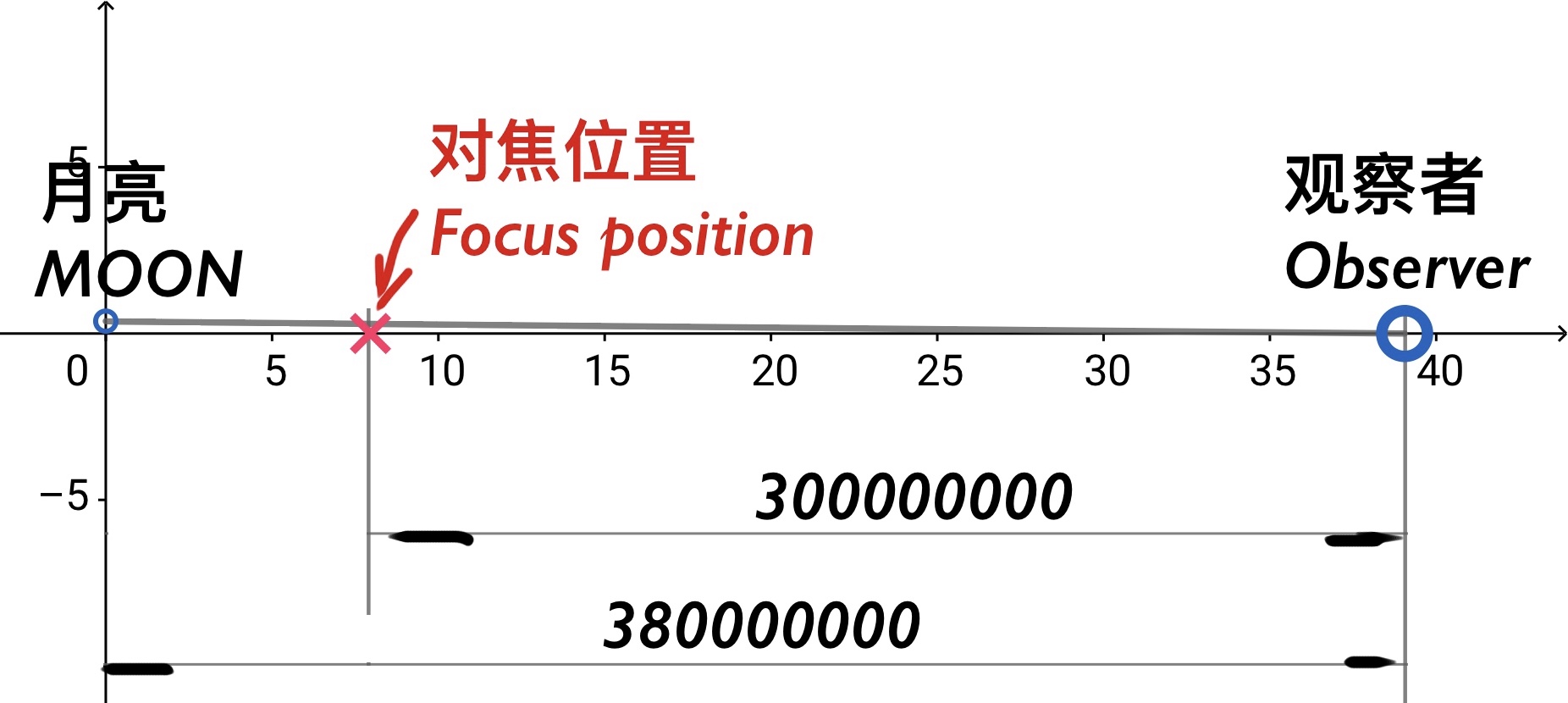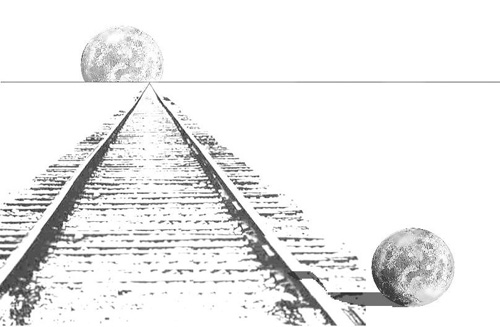- Analysis

As shown in the figure, $HG$ is the lens, $w$ is the height of the imaged object $AC$, $x$ is the height like $JM$, $v$ is the image distance, $u$ is the object distance, and $f$ is the focal length. The red line is the light path. $DE$ is the screen.
We all know that the relationship between $u$, $v$, and $f$ is
$\cfrac{ 1}{ u }+ \cfrac{ 1}{ v}= \cfrac{ 1 }{ f } (1)$
$f = \cfrac{uv }{ u + v } $
From similar triangles we can see:
$\cfrac{ x}{ w }= \cfrac{ v-f}{ f }= \cfrac{ v }{ f }-1$
and so
$x = w(\cfrac{ v}{ f }-1)(2)$
From equation (2), we can see that if $w$ and $v$ are unchanged and $f$ decreases, then $x$ will increase.
It is also the reason why the human eye sees the moon on the horizon so it grows bigger. When looking at the horizon and the moon, due to the influence of the ground scenery (the distance is much smaller than the moon), the human eye uses a relatively short focal length, so the image of the moon is relatively large, although the image of the moon is not so clear; When the moon is at the top, the human eye uses a longer focal length, so the image of the moon is smaller, but the image of the moon is clearer.
The image distance $v$ does not change, and the object distance $u$ also does not change. Will changing the focal length blur the moon's image? This will not be blurred within a certain limit, because the moon is very far away, the object distance $u$ is large, and the aperture of the human eye is relatively small, so the moon imaging has a large "depth of field."
2. Magnification
Let $K$ be the magnification, look at the zenith moon's focal length as $f$, and image height as $x$, and look at the horizon moon's focal length as not $F$, and image height as $X$. Then according to formula (2)
$K = \cfrac{ X}{ x }
=\cfrac{ \frac{ v}{ F }-1}{ \frac{ v}{ f }-1 }
= \cfrac{ \frac{ 1}{ F }-\frac{ 1}{ v }}{ \frac{ 1}{ f }-\frac{ 1}{ v }} (3)$
$F < f$
If the object distance of the zenith moon is exactly the distance $u$ from the earth to the moon, set
$\cfrac{ 1}{ U }= \cfrac{ 1 }{ F }-\cfrac{ 1}{ v }$, then (3)
$K = \cfrac{ \frac{ 1}{ U } }{ \frac{ 1 }{u } }= \cfrac{ u }{ U }$ (4)
It can be seen that the smaller $F$ is, the smaller $U$ is, and then the larger $K$ is, the larger the magnification is.
If you focus at $300,000$ kilometers, the magnification is
$K = \cfrac{ 38}{ 30 } = 1.266$ times

3 Discussion
When shooting with a camera, the moon above the head is the same size as the moon on the horizon. This is because the camera shoots with the same focal length. This is different from human eyes. Due to the influence of ground scenery and viewing habits, the focal length of the human eye when observing the moon close to the ground will be shorter than that of the zenith moon.
4 Conclusion
I think the moon illusion is the result of observing the moon with a relatively short focal length. I think this is the reason for the moon illusion.

 (Source, Wikipedia Commons)
(Source, Wikipedia Commons)

